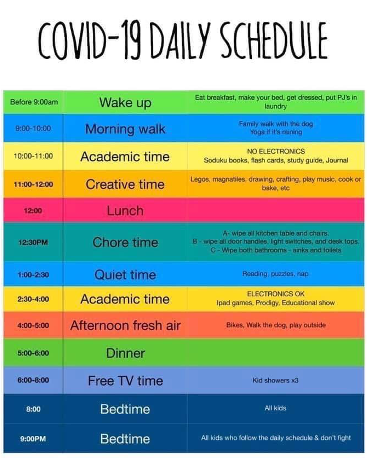
ABOUT THE AUTHOR
Derrick Beitzel
OhioKAN Navigator, The Village Network
Derrick has spent his career working in the mental and behavioral health fields, previously serving as a Child Care Worker for youth and young adults with severe emotional and behavioral needs in residential treatment, as well as a Behavioral Health Technician at Mercy Health, St. Charles Hospital, and a Tech for Community Mental Health’s Crisis Stabilization Unit. He has experience working with those with developmental disabilities at Tuscarawas County Board of Developmental Disabilities and held the role of Chief of Operations at Alco Services, providing respite care and other services to individuals with developmental disabilities there. Derrick has lived experience and is currently the legal guardian for three children in kinship placement while working on the adoption process. He holds a Master of Arts from Baldwin Wallace College.
Being a caretaker of a child who has experienced traumatic events is challenging. In the best situations, you’ve gathered a support team and resources that might include school personnel, mental health and medical professionals, parenting classes and trauma-informed care principles. But in this global pandemic, even the strongest supports aren’t always available. Here are some key takeaways for parents and families continuing to manage through an ongoing pandemic.
Structure & Routine
Structure and routine are important for most children, but this is especially true for children who have experienced trauma. When you’re working from home or simply in the house more than usual, kids need to know what to expect.
Set a Consistent Schedule
For days when children are at home, keep the morning routine the same. Wake up in the morning, change out of pajamas, eat breakfast, and get ready like you would if you were going to work or getting the kids off to school. Have your child work on activities or homework at the same time each day. Include breaks and meals similar to what they would have at school, but be flexible to find what works for your schedule. Breaks during learning are important!

Create an Inviting Learning and Play Space
If you haven’t already, determine an area that will be for schoolwork and create a space that fosters learning and creativity. If you have an extra room or a desk available, use it! If you need to use a shared space such as the kitchen table, just make sure there is enough room for them to work. At the end of each day, make clean-up a part of the routine and put everything back where it was. Storing school materials in an assigned space or even in a backpack will make it easier to get started the next day.
Encourage Movement
Create time each day for physical activity, and weather-permitting, try to get outside if possible. On days where getting outside isn’t possible, find online workout or activity videos that are age-appropriate, such as Cosmic Kids Yoga or Go Noodle. Use a safe space in the basement or move the car out of the garage to create more space to let kids play. Burning that excess energy will help limit challenging behaviors and help kids fall asleep at night.
Support Creativity and Contemplation
Creative time and quiet time are just as important for childhood development as academic activities. Include this as part of the daily routine and give children a list of activities to choose from. Creative time can give children a chance to express and cope with their feelings, as well as opportunities to think and problem solve. Quiet time is equally as important. Giving the mind and body a chance to rest without constant stimulation is key, even if this can only happen for about 20 minutes each day.
Maintain Sleep and Body Hygiene
It is also imperative that children have clear expectations around bedtime routines. This may include nightly baths or showers and brushing teeth — to help emphasize the importance of hygiene — as well as rituals like story time or a lullaby. Of course, bedtimes may shift during summer for older children and teens, but it’s important not to throw the sleep-wake cycle off too much, as too little sleep can make it difficult for learning and managing emotions.
Family Time
Even if you’re working from home, kids can still feel disconnected to those around them if quality time is lacking. Make eating meals together a priority; use this time to check in with everyone, ask about their day and engage in a family conversation. This can also be a time to discuss the pandemic (at a developmentally appropriate learning level) with your children and remind them the importance of washing hands, wearing masks, staying home when sick, etc.
Look for new opportunities to connect with your kids. Let them pick out a meal and help cook it once a week. There are tremendous opportunities for learning that can take place in the kitchen that kids don’t even realize, such as fractions and measurements, telling time, or working together. Or pick a night or two to play cards or board games as a family. Activities like this are fun but also emphasize important lessons such as taking turns, using manners, and being a good sport.
Screen Time
It is both OK and inevitable that kids are getting more screen time during the summer of a pandemic, but there are many screen time activities beyond zoning out in front of the TV. Look for educational opportunities such as electronic games they can play at home or a list of reading websites. Also, many zoos, museums, and libraries have created Facebook groups, events and other chances to participate in educational opportunities that take place online.
Allow older kids to “earn” extra screen time by doing chores or reading, such as reading for 20 minutes in exchange for one more episode of their favorite show, or completing chores from a list to gain access to their electronic device of choice for a set period of time. You can also use extra screen time as a reward for positive behavior.
Asking For Help
You have worked hard to establish your support network, so use it! Don’t be afraid to contact your child’s school and ask for extra help. If you are managing remote learning, teachers or intervention specialists may be available to sign on with your child or check in at the end of the day or week to make sure work isn’t missing. Any special services such as speech or occupational therapy may be available beyond the end of the school year.
Meanwhile, telehealth options may provide mental health counseling and support for children and families even while many offices remain closed. Even if you fear they won’t get as much out of a session over the phone or through a tablet, this time still provides 1:1 interaction with an adult. Continuing these appointments virtually will allow your child to maintain the patient-therapist relationship so that when it is time to go back to in-person services, they don’t have to start over.
Medications may also be appropriate, especially during periods of high stress and anxiety. Don’t be afraid to reach out to your primary care physician or prescribing provider to share concerns or ask for suggestions. Children with trauma already have a difficult time managing their emotions and behaviors, and the pandemic has exacerbated mental health concerns for many children.
Self-Care
Parenting is stressful. Parenting a child with a history of trauma is even more stressful. Parenting a child with a history of trauma during a pandemic can feel overwhelming.
Remember to take care of yourself while you’re taking care of your family. Be sure you are eating healthy foods, moving daily (take a walk with the family or play a game in the backyard), and getting enough sleep. It is also important for you to take some time to participate in the activities you enjoy and to maintain safe contact with supportive friends and families. Find ways to take a break and decompress. If more than one caretaker is available in the home, take turns watching the children so everyone is at their best.


















